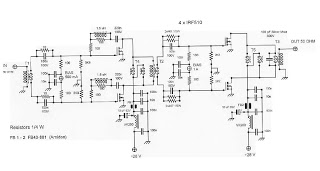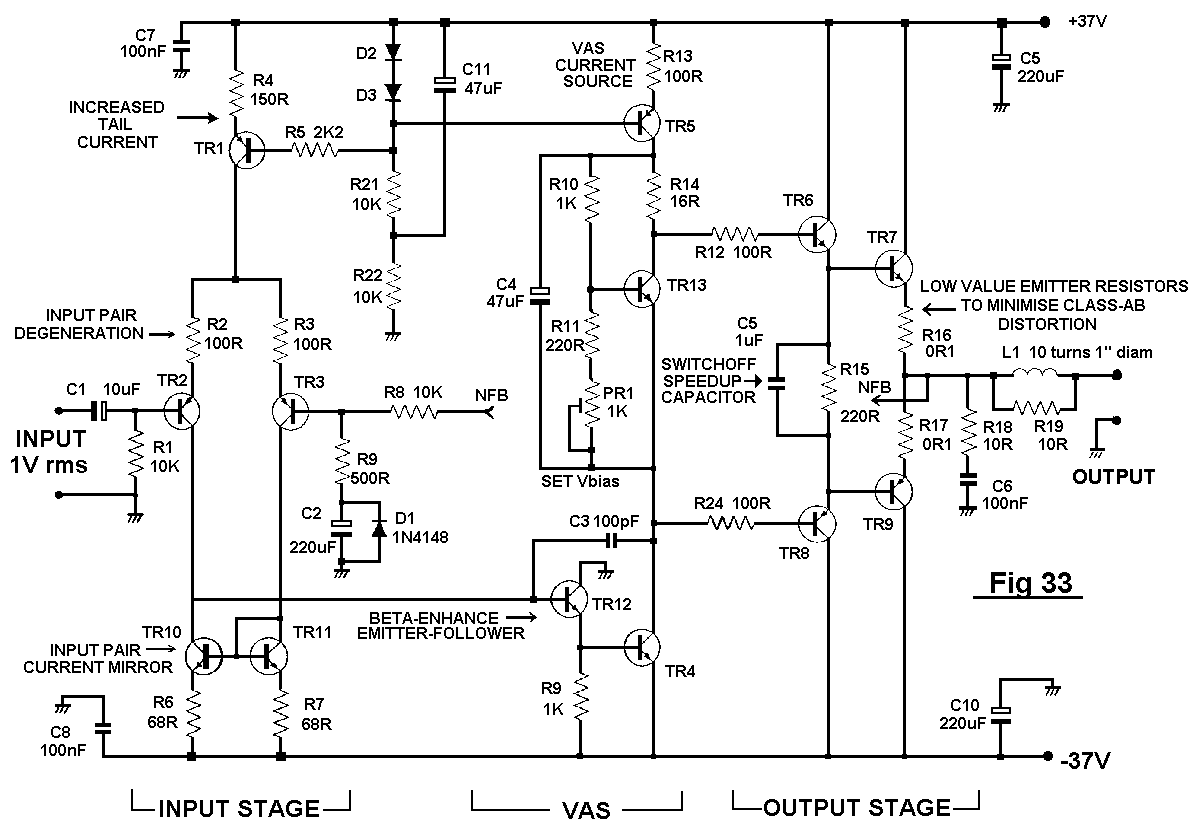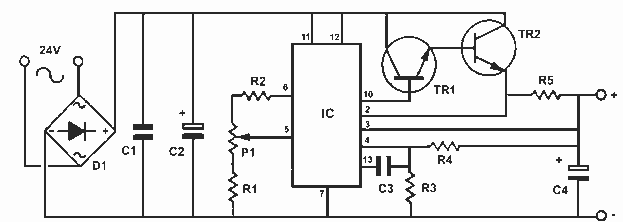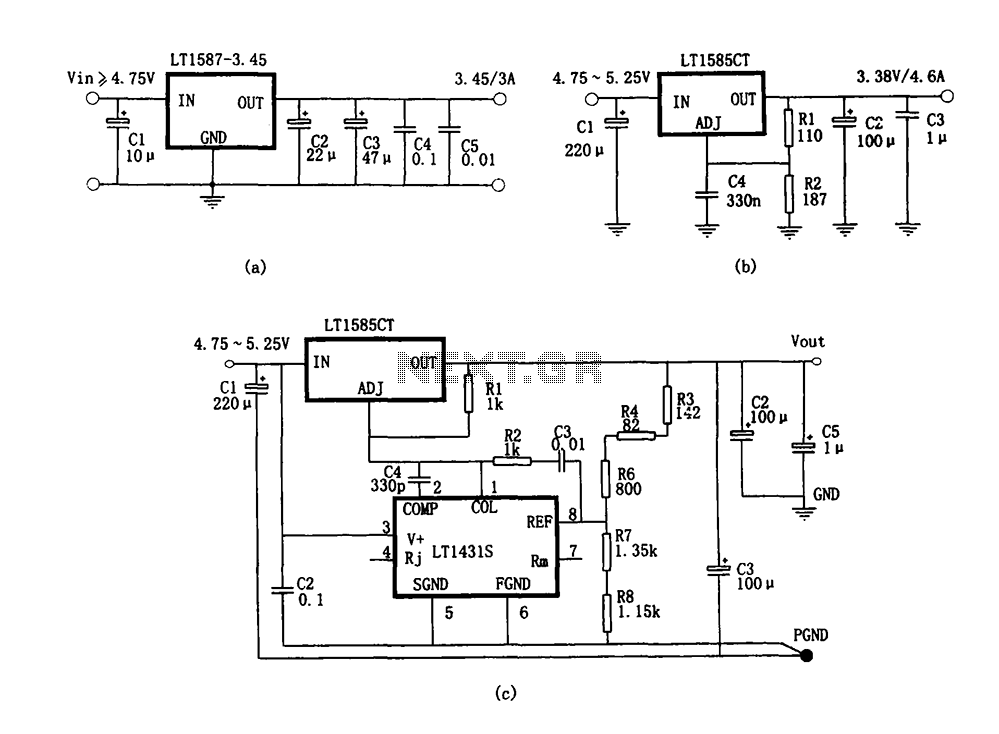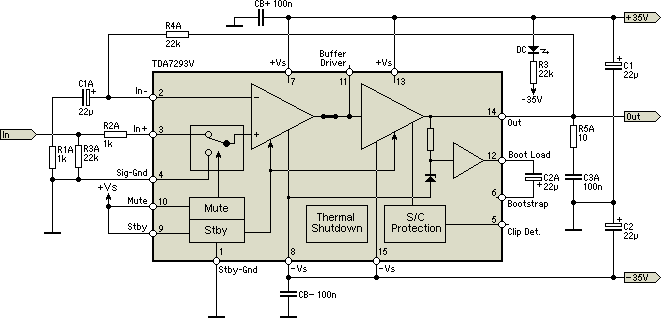
Switching power supply Regulator 0-40V 4A by L296

Specifically for the chip used in this circuit, the data is as follows: The oscillator operates at a frequency of 200 kHz, with output noise below 1% (worst case). The maximum current is 4 A at 20 V. The voltage can be regulated from true zero (0 V) to 40 V. Both voltage and current limits can be adjusted. Special care should be taken when purchasing the choke, as its ferrite material should be designed for frequencies up to 300 kHz. The input to the regulator can be either DC or AC voltage due to the presence of a rectifier bridge.
The described circuit utilizes a specialized chip that features an oscillator operating at a frequency of 200 kHz. This frequency is critical for ensuring the stability and performance of the circuit. The output noise level is maintained below 1%, even under worst-case conditions, which indicates a high-quality signal output that minimizes interference and distortion.
The circuit is capable of delivering a maximum current of 4 A at an operating voltage of 20 V. This allows for a robust performance suitable for various applications requiring significant power. The voltage regulation capability extends from 0 V (true zero) to 40 V, enabling flexibility in output voltage settings, which can be crucial for applications that necessitate precise voltage levels.
Both the voltage and current limits are adjustable, providing the user with the ability to tailor the circuit's performance to meet specific requirements. This feature is particularly beneficial in applications where load conditions may vary or where specific operational parameters must be adhered to.
Attention must be given to the selection of the choke within the circuit. The ferrite material used in the choke should be rated for frequencies up to 300 kHz to ensure optimal performance and efficiency. This consideration is vital to prevent losses and maintain the integrity of the circuit's operation.
The input to the regulator is versatile, accommodating both DC and AC voltage sources, thanks to the integration of a rectifier bridge. This design choice enhances the circuit's adaptability, allowing it to function effectively in various power supply scenarios.
Overall, the circuit design emphasizes stability, performance, and flexibility, making it suitable for a wide range of electronic applications.Specificaly for the chip that is used in this circuit data are like this: Oscilator runs at freq 200kHz, output noise is below 1% (worst case), max current is 4A at 20V. Voltage can be regulated from 0, 0 V (true zero), to 40 V. Voltage and current limit, can be adjusted. You should take special care when purchasing choke. Its ferrite material shou ld be build for frequencies up to 300kHz. Input to the regulator can be DC or AC voltage becouse the input is rectifier bridge. Disclaimer All files are found using legitimate search engine techniques. This site does not and will not condone hacking into sites to create the links it list. We will and do assume that all links found on the search engines we use are obtained in a legal manner and the webmasters are aware of the links listed on the search engines. If you find a URL that belongs to you, and you did not realize that it was "open to the public", please use the report button to notify the blogmaster of your request to remove it or it will remove within 24 hours.
This is not an invitation for webblog haters to spam with requests to remove content they feel that is objectionable and or unacceptable. Proof of URL ownership is required. NOTICE: This Blog Has Already Been Reviewed And Accepted By Blogger. com 🔗 External reference
The described circuit utilizes a specialized chip that features an oscillator operating at a frequency of 200 kHz. This frequency is critical for ensuring the stability and performance of the circuit. The output noise level is maintained below 1%, even under worst-case conditions, which indicates a high-quality signal output that minimizes interference and distortion.
The circuit is capable of delivering a maximum current of 4 A at an operating voltage of 20 V. This allows for a robust performance suitable for various applications requiring significant power. The voltage regulation capability extends from 0 V (true zero) to 40 V, enabling flexibility in output voltage settings, which can be crucial for applications that necessitate precise voltage levels.
Both the voltage and current limits are adjustable, providing the user with the ability to tailor the circuit's performance to meet specific requirements. This feature is particularly beneficial in applications where load conditions may vary or where specific operational parameters must be adhered to.
Attention must be given to the selection of the choke within the circuit. The ferrite material used in the choke should be rated for frequencies up to 300 kHz to ensure optimal performance and efficiency. This consideration is vital to prevent losses and maintain the integrity of the circuit's operation.
The input to the regulator is versatile, accommodating both DC and AC voltage sources, thanks to the integration of a rectifier bridge. This design choice enhances the circuit's adaptability, allowing it to function effectively in various power supply scenarios.
Overall, the circuit design emphasizes stability, performance, and flexibility, making it suitable for a wide range of electronic applications.Specificaly for the chip that is used in this circuit data are like this: Oscilator runs at freq 200kHz, output noise is below 1% (worst case), max current is 4A at 20V. Voltage can be regulated from 0, 0 V (true zero), to 40 V. Voltage and current limit, can be adjusted. You should take special care when purchasing choke. Its ferrite material shou ld be build for frequencies up to 300kHz. Input to the regulator can be DC or AC voltage becouse the input is rectifier bridge. Disclaimer All files are found using legitimate search engine techniques. This site does not and will not condone hacking into sites to create the links it list. We will and do assume that all links found on the search engines we use are obtained in a legal manner and the webmasters are aware of the links listed on the search engines. If you find a URL that belongs to you, and you did not realize that it was "open to the public", please use the report button to notify the blogmaster of your request to remove it or it will remove within 24 hours.
This is not an invitation for webblog haters to spam with requests to remove content they feel that is objectionable and or unacceptable. Proof of URL ownership is required. NOTICE: This Blog Has Already Been Reviewed And Accepted By Blogger. com 🔗 External reference
